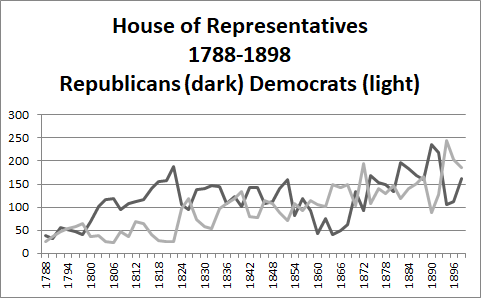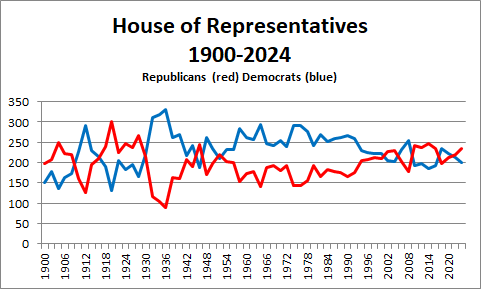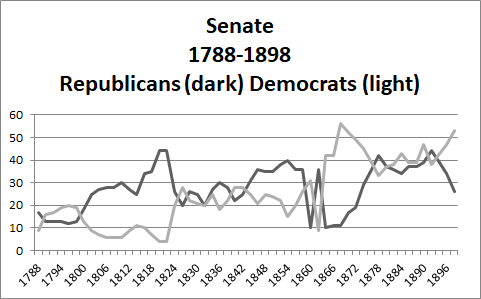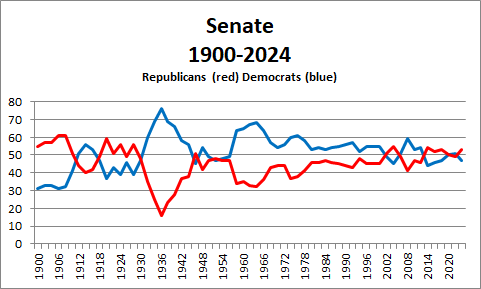Conservatives and Liberals in American Politics
- Bill Hansen
- on Jan, 06, 2017
- 3 Comments.

CONSERVATIVES AND LIBERALS
IN
AMERICAN POLITICS
There are two basic philosophical tenets in American politics – conservatism and liberalism. These are comparable to the Republican and Democratic parties. Political parties tend to adhere to one of these two philosophical systems, reflected by the party platform. Third parties, like libertarianism, have yet to be viable competitors in modern times.
Liberalism is characterized by an optimistic, innovative, and progressive set of values and attitudes. Extreme liberalism favors social reform, the expansion of government powers, concern for human and animal rights, and tolerance for a broad number of different viewpoints. Liberals are activists in that they promote vigorous and sometimes aggressive action in pursuing a political or social end. They largely view the Constitution as a “living document” that is to be interpreted according to modern norms and viewpoints.
Liberalism (embraced by the current Democratic Party) is founded on Marx’s dialectical materialism. The party advocates personal rights such as free speech and freedom of association, but in the past few decades the democratic majority has voted against these freedoms.[1] The party embraces secularism. Liberals are for a separation of church and state. Liberals are also for redistributing wealth – heavily taxing the rich and giving to the poor. They favor expansion of government and social services. This ultimately means more taxation for all Americans. Liberals are not anti-business but they are inclined to impose regulations to control business practices. The broad sweep of liberalism places responsibility more in the hands of society (and hence under the control and guidance of government) than that of individuals. Criminals, therefore, need to be helped through education and counseling because “society” somehow failed them. Guns are viewed as evil, because they allow people to commit evil. Strict gun control and, even, confiscation are part of their social engineering program. Liberals are more inclined toward abortion. They are also more likely to favor homosexuality, same sex marriage, and LGBTQ rights.
Conservatism is broadly defined as an attitude of resistance to change. A cautious and somewhat “hands off” approach is taken to traditional and conventional forms of institutions and social behavior. The extreme conservative includes religious dogmatism or fundamentalism, right-wing political stands, militarism, intolerance of minority groups, authoritarianism, hard punishment, anti-hedonism, conformity, conventionality, and suspicion of scientific progress.
Conservatives agree on individual responsibility; improper social behavior is, therefore, punishable without the state having to pay for the criminal’s rehabilitation. They favor a strict interpretation of the Constitution based on the ‘founding fathers’ intent, rejecting modern revisionism. Conservatives support big business and individual wealth accumulation. They favor self-defense, gun ownership, and Second Amendment rights. Most conservatives have a strong Christian heritage that protects fetal rights. The Republican Party is the conservative wing of our dual political system. They are bound by religion, capitalism, and militarism.
We might question why people prefer one party line to another. Do conservatives come from authoritarian households? Are liberals the product of tolerant and broadminded parents? Or are people genetically prone to one philosophy over another? Some researchers suggest that anxious prone people that have feelings of insecurity, inferiority, and low self-esteem tend to be conservative. This would imply that conservatives would dislike and avoid novelty, spontaneity, risk, disorder, social chaos, and unnecessary experimentation. Whatever the answer may be, it is apparent that these two broad categories of thought exist in every nation and culture.
Another take on the differences between liberal and conservative thinkers involves personality traits and specific brain structures. A study done at the University College of London and published in Current Biology found that liberals have more gray matter in a part of the brain associated with understanding complexity, while conservatives have bigger brains in the section related to fear. Liberals typically have larger anterior cingulate cortexes associated with tolerance to uncertainty. Conservatives have more gray matter volume in the right amygdala, an area that governs sensitivity to fear. This finding helps to clarify why these two philosophical groups think and communicate in such different ways.
Liberals with larger anterior cingulate cortexes have a higher capacity to tolerate uncertainty and conflicts than do conservatives; this leads to more progressiveness. Liberals are, therefore, more tolerant of new social behaviors and agendas, immigrants, and cultural differences. They are permissive in their approach to governing and therefore open to unproven innovations and social experiments micro managed by tight regulations. Conservatives with a large amygdala are more sensitive to disgust and tend to respond to threatening situations with defensive attitudes and aggression. Conservatives are, for instance, more sensitive to threatening facial expressions than liberals. This accounts for why they favor relatively safe and conventional policies, traditionalism, and more social conformity.
Brain makeup does not necessarily force a person to think a certain way. It rather predisposes one to do so because a person’s political views can change their physiological traits over time. In a nutshell, then, conservatives wish to avoid self-harm, while liberals want to avoid collective group harm. The conservative is individually minded and the liberal is collectively minded. The first values individual initiative and personal freedom. The second values group initiative and collective cohesion.
Martin Armstrong wrote a special report for Investment Cycles (January 1995) entitled, “Cycles in American Politics.” In his study he found that Americans prefer small government rather than big government. Thirty-one presidents were elected on a platform of smaller government, and/or lower taxation. This compares with only 21 that backed a bigger role for government. Most Americans do not want a socialized state, although the federal government has continued to grow substantially since the wartime victory by the Lincoln Republican Party over the Secessionist States of the Southern Confederacy. It has become somewhat hard to tell the difference between the two main parties since they so often follow a similar pattern of policies once their representatives are elected. Both parties have since the 1960’s allowed the federal government to grow larger, the national debt to rise, and imposed more regulations on social conduct. Taxation and government oversight in many private matters continues to increase. In the past, as well as today with the War on Terrorism, war and national economic crises have been the triggers for a growth in government, and not an overt drive for socialism per se.
Distinct differences exist between the parties, but in the final analysis, certain fundamental policies have remained in place. This suggests that someone is behind the broad political arena calling the shots. Corporate executives, wealthy entrepreneurs, and rich elites lead the list of influence makers in the United States. Behind the elected officials is a broad array of relatively permanent government employees that either carry out the orders of elected officials or have a vested interest in maintaining certain core policies – such as the military might, or NASA, the EPA and other agencies. Administrations change with their agendas but certain doctrines, believed to be vital to the welfare of the nation, persist in spite of the official party line. This suggests that there are powerful individuals behind the scenes helping or hindering candidates of their choice. Conspiracy is not the word for such a reality. It is, in fact, a product of our evolving democratic system.
The revolutionist spirit of individualism, however, is still alive and well today in most Americans, despite the fact that large social welfare programs exist. Americans dislike big government, but polls show overwhelming support for large entitlement programs that increase domestic spending. This, in turn, demands a larger bureaucracy to run the massive aid programs. By the mid 1990s 61% of Americans trusted state government to do a better job of running basic programs than the federal government.[2] In spite of this the Federal Register of national laws grew from 5,307 pages of rules and regulations in 1940 to 68,101 pages in 1995. Essentially then, the battle between the ideological parties remains the same, while the federal government grows increasingly larger and stronger.
The more power the federal government commands, the more oppressive it tends to be. The founding fathers understood that power in the hands of a few corrupts. Our government was established with this in mind so the federal government was initially severely limited. Over the years a relative balance existed between the states and the federal government. The Civil War was a great turning in that state’s rights became increasingly subservient to federal authority.
Broadly speaking, the Republican Party stands for limited government, while the Democratic Party favors an expanded federal role. Throughout U.S. history, these two party lines have waxed and waned with one another. At times the Republicans held sway and at other times the Democrats controlled the majority of votes. The Democrats gained power from World War II until the Reagan Revolution. Although the Democrats held the most seats in Congress during the Reagan years, the Republicans started to gain on them from this time forward. President Clinton, although a popular and successful leader, was wanton and reckless in personal, as well as, in some presidential powers. This brought a shift to the right in American politics.
The Republicans had an opportunity to re-establish a new movement to reduce the size of government during the Bush administration. President Bush, unfortunately, did just the opposite under the guise of war. Federal laws increased, the national debt grew, and the War on Terrorism spread and lax over site of the financial and mortgage industries paved the way for the Great Recession (largely due to a congressional Democratic Party majority). Barack Obama’s extraordinary popularity propelled him into the presidency in 2008. His first two years in office produced one of the most active Congresses in history. The 111th Congress passed a mammoth economic stimulus package, financial sector reform, healthcare reform, and a host of lesser social and government improvement bills. The wars in Afghanistan and Iraq and the progressive bills of the 111th Congress parallel those of the 89th Congress during 1965 and 1966 when the Vietnam War was waging. I have often referred to the ‘War on Terrorism’ as another Vietnam. There are also interesting similarities between the 1930’s depression and the economy during the Great Recession of 2007.
Democratic control of the House has been almost constant since 1930. Only twice, in 1946 and 1952, has the Republican Party dominated. All that changed in 2002 when Republican took charge. This was during George Bush’s presidency, the Iraq War and the Katrina disaster. American politics since 2002 has been extraordinarily divisive with both parties trading House majority regularly. The House flipped again back to the Democrats in 2006; reversed to the red side in 2010 after the onset of the Great Recession and repudiation of President Obama’s progressive agenda; then back to the blue Democrats in 2018 for fear of what Donald Trump might do next. President Trump’s disdainful handling of the Covid-19 pandemic and his vengeful, dishonest, and manipulative form of leadership ended in a disgraceful attempt to steal the election. It will be interesting to see how Trump’s legacy and his numerous legal and financial problems affect the Republican Party in the 2022 and 2024 elections. In early 2021 almost fifty percent of Republicans reported in a poll that they would follow Trump if he ran again as a Republican or formed a third party. The rift in the Republican Party is so great it could go the way of the Know Nothing party of the 1850s, a movement based on conspiracy theories and fear of excessive Irish immigration, if it cannot realign itself away from Trumpism. One thing is for certain, the 2020 election was a watershed moment for the Democrats. Although they lost seats in the House they maintained control; a run-off election in the Senate resulted in an evenly divided floor with the Democrats in favor to win during a tie vote. Most importantly, the Democrats secured the White House. Now they need to securely guide a ruptured nation in uncertain times.
The 2010 election was a watershed moment that gave the Republicans control of the House. This stymied the Obama Democratic Party stampede that ushered in huge deficits with grand policies like the Affordable Healthcare Act (“Obamacare”) and a massive financial bailout of the banking, investment, and auto industries in the wake of the corrupt real-estate transactions that resulted in the Great Recession of 2007. The 2012 election was so divisive, vitriolic, and important that a record number of voters turned out. Transiting Uranus crossed the western horizon, the Descendant, in the U.S. Declaration of Independence horoscope in 2010. This indicates rebellion, change, new ideas, freedom, and independence by people opposed to the status quo. This cycle will not return for another 84 years. The Uranus transit foretold of a spicy election season followed by many radical political changes. The parties became widely and vehemently divided.
The conservative backlash to President Obama’s progressive policies, bills, and directives led to significant Republican House gains in 2010 that resulted in that party holding a majority throughout 2010-2018. Similar results occurred in the Senate but not until the 2012 election. Both parties are vulnerable to major swing votes when the party line goes to extremes or fails to address key issues. Sometimes critical circumstances arise like war or a financial crisis that results in the dominant party losing its grip on power. Extreme political agendas though encounter severe voter backlashes. The Obama administration, for instance, pushed the nation further to the left than at any time in our history allowing a complete outsider, a non-politician, Donald Trump to win a surprise victory over Hillary Clinton in the 2016 election. One extreme tends to lead to an opposite extreme. The Trump administration was wildly abnormal and quite conservative, some would say far right. To counter this, avowed socialists and those with radical liberal philosophies gained support in the Democratic Party. Another indication of corrective extremes can be found in young voters. Polls reveal that Generation X is highly conservative. A counterweight to this group is the next younger generation, the Millennial, who espouse far left and socialist agendas.

Throughout American history it has been difficult at times to label emerging parties as either conservative or liberal. The table of the U.S. Congress was taken from data supplied by John B. Bradshaw in an article for Cycles Magazine (May/June 1994, Foundation for the Study of Cycles). Mr. Bradshaw carefully weighed difficult periods in history to determine if the parties involved were more conservative or liberal in their approach to issues. The political philosophies of parties tend to change over time. It is important, then, to determine the substance of the party in order to label it correctly. Doing so, Mr. Bradshaw labeled The Federalist Party conservative. The Democrat-Republican Party he labeled liberal. The Jacksonian Party he viewed as conservative. The Whigs and Unionist Parties were labeled conservative.

The graphs representing the number of conservative and liberal congressmen are informative in several ways. They illustrate psychological paradigm shifts in the mood and general policy directions throughout our history. Every election brings a new round of adjustments as citizens’ re-evaluation the course of events and how the two parties have performed.
Two clear patterns emerge in the House of Representatives. Every two years the parties invariably trade seats; the winning majority tends to lose seats to the minority party. The second pattern spans several years to a decade or more indicating that the public favors liberal policies, in so far as, providing more and better social services and help for those in need. An underlying feature of the trend reveals a delicate balance in public opinion. A significant number of voters tend to swing from left to right and vice versa election after election. This recurring vacillation serves the republic well as a balance so that neither side of the philosophical debate gets to ultimately control the other. The Democrats, however, have been in the seat of power in the House almost twice as long as Republicans, testimony to the public’s desire for liberal policies that do not go to extreme and threaten to unravel our democratic fundamentals.
Another observation is that the American public values conservative representation during times of national duress. There has been a disparity between the House and the Senate in times of crisis, like during World War II when the House was predominately Republican until near the end of the war, while the Senate was decisively Democrat. Mostly, however, the public favors a conservative attitude when the nation is threatened. Conservatives controlled the House between 1775 and 1801 – during the Revolution. They also held a lead between 1825-29, 1839-43 (the era of reform from 1829-50 witnessed the rise of the common man and white male suffrage), 1849 (gold rush and mass migration of settlers to California and other territories complicating the divisive slavery issue), 1859-75 (Civil War and Reconstruction), 1895-1911 (Spanish American War), 1917-31 (World War I and its aftermath), 1947-49 and 1953 (before and after the Korean War), 2002-2006 (9/11 War on Terrorism), and 2010-2018 (Great Recession, resistance to President Obama’s healthcare bill, growing regulations, and establishment of extreme social values). The shift back to liberal control in 2018 in the House was in reaction to the unruly conservatism and antics of President Trump. Another power shift to conservative control occurred in 2024 with widespread voter displeasure to President Biden’s immigration policies, persistent high inflation, and LGBTQ initiatives. Power shifts like this are rare. In the past century, the House leadership only changed directions in 1912, 1920, 1932, 1948, 2008, and the unique back-and-forth shifts in 2018 and 2024. These shifts took place during or shortly after periods of national crisis.


Distribution among Senators is rather different. Conservatives led the government after the Revolution during the nation’s infancy. They led again between 1827-29, and 1841-45. Then there was a wild swap from party to party all through the tumultuous War Between the States. After the war, presumably because the Republican Party of Lincoln won, a long period of conservatism ruled the land. It lasted in the Senate from 1865 until 1879. Conservatives took the Senate again in 1881-1893, but the 1893 recession dethroned them until 1895-1913. They held sway a long time after World War I, during the Roaring Twenties of Prohibition and gangsters – 1919-1931. Franklin D. Roosevelt’s immense influence during one of the most momentous times in American history allowed the Democratic Party to run the Senate almost universally since.
The fact that the party of the liberals has controlled Congress since the Great Depression is an amazing footnote in history. But conservatives have been gaining in both sections of the Congress since 2000. Ronald Reagan arguably initiated this shift in the early 1980s. But it took twenty years for the Republicans to par with the Democrats. The 2004 election was, therefore, an important one. It allowed the Republicans to gain a substantial lead in both houses of Congress. Barack Obama’s unique campaign and rapid rise to power, however, turned the table on conservatives. The table turned again in 2010 when the House majority turned Republican, presumably due to the protracted terrorism wars and the ongoing economic crisis of the Great Recession. A high jobless rate and an anemic economic recovery under President Obama allowed the Republicans to win the Senate in 2014 thereby controlling both chambers. A wave of populism riding on widespread “middle America” dissatisfaction and dissent with liberal multiculturism, lax immigration enforcement, acceptance of LGBT rights and other cultural progressiveness catapulted Donald Trump into the White House in a stunning election victory for the Republicans in 2016.
The 2018 midterm returned the House to Democrat control as the political pendulum swung too far right under the unpredictable and provocative leadership of Trump. The 2020 election was even more stunning. Not since 1952-1954 has the Senate been so evenly divided. The 50/50 split is a sign of the divided nation.
The 2022 midterm election was a superb opportunity for the Republicans to win solid majorities in the House if not also in the Senate. President Joe Biden’s approval rating hovered around 40% or less during his first two years in office. Add to this the average loss since World War II of 43 House seats by the standing party, the Republicans expected a wave and got a ripple, only capturing the House by a slim majority of 219 to 212; the evenly divided Senate went further to the left with the Democrats winning 51 seats to 49 for the Republicans. This disappointing outcome was largely blamed on poor Republican candidates favored, and many handpicked, by Donald Trump. Trump proclaimed his candidacy right before the midterms. Many swing voters joined with moderate Republicans to vote against Trump endorsees, sending a clear message that the majority of voters don’t want another Trump presidency. 2024 was a watershed election for conservatives. Republicans took control of the Presidency, the House and Senate. The power shifts since 2014 resemble those in 1946 after World War II.
[1] The McCain-Feinstein Campaign Finance Reform Act of 2004 for example.
[2] Princeton Survey Associates, December 1995 poll of 1,514 Americans.
Recent Posts
- A Grand Time
- Financial Forecast 2025
- Temperature Trends 2024-25
- Precipitation Trends 2024-25
- Sunspots 2024-25
Categories
Pages
- Home
- Books
- Home
- Newsletters
- 2020 Triple Alignment
- Black Holes
- I Heard It Through the Grapevine
- Jupiter-Saturn Star Comments
- Jupiter/Pluto 2020: The Great Transition
- Jupiter/Saturn Conjunction 12/21/2020
- More Donald Trump Drama
- More Earthquakes in 2018-2023
- Progressive Policies and the Uranus/Pluto Cycle
- The Star of Impeachment
- Services
- Testimonials
- The Reshaping of America
- The United States Compatibility with President Trump
- Videos
- Your Astrologer

Thanks for the excellent article Bill! I especially liked seeing the graphs of the US House and Senate over time, and how the country has continually cycled between liberals and conservatives throughout our history. After eight years of a liberal Obama administration, we are now swinging the other way to the conservative Trump administration. But certainly some time soon, we will swing back the other way toward liberalism, it’s just a question of time.
One thing to think about too is that people become conservative as they get older and after they have children. By the time people hit midlife many of their liberal visions of what they wanted the world to be were struck down by how the world really works. This is probably how a conservative is born for a large swath of the population.
Thank you for your interest in my work and your insightful comments. I agree that people tend to conservatism as they get older – reality sets in along with wisdom and carefulness. I am not to familiar with Vedic but I do use the 5th, 7th, 8th, and 9th harmonic aspects so I am familiar with harmonic charts like those used in Vedic astrology. Are you a wise young soul or in your conservative older years? Ha.